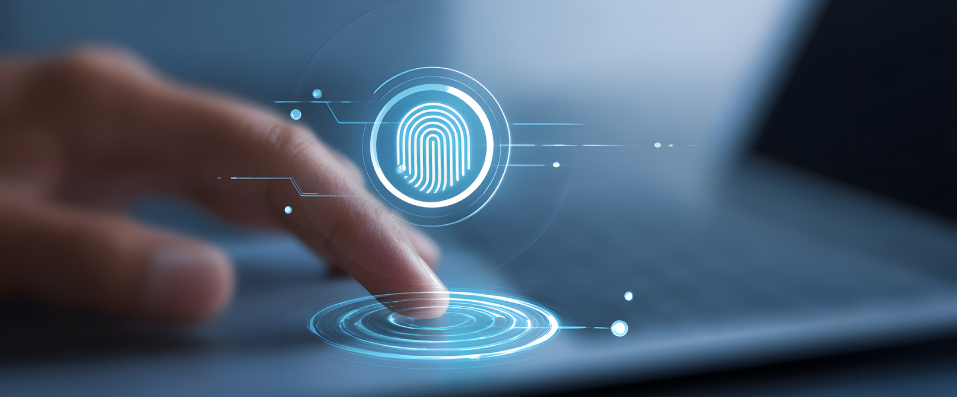Why Is Two-Step Authentication Necessary
November 04, 2025 • César Daniel Barreto

Every second online brings both convenience and danger. People log in, share, buy, send. Everything seems effortless—until it isn’t. Hidden behind glowing screens, cyber threats evolve faster than most realize. The internet, vast and dynamic, hosts not only innovation but also deception.
According to recent data from Statista, more than 2,200 cyberattacks occur every day, which means roughly one every 39 seconds. That’s how fragile our digital lives have become.
Imagine one password—just one—standing between your personal world and a stranger with malicious intent. Weak? Reused? Stolen through a phishing email? That’s all it takes. And when that single key falls into the wrong hands, the consequences multiply fast: stolen identities, drained accounts, leaked photos, compromised businesses.
The truth is unsettling: the password alone no longer protects. That’s where two-step authentication enters—not as a luxury, but as a necessity.
What Two-Step Authentication Actually Means
At its core, it’s simple. Two-step authentication (2FA) adds an extra layer of defense beyond your password. First, something you know—your password. Second, something you have—a temporary code, a mobile device, a fingerprint. Sometimes even something you are—facial recognition or voice pattern.
So when an intruder tries to break in, they’ll find the door locked twice. Even if they’ve stolen your password, they’ll still need your second form of verification. A text message, an app notification, or a biometric scan—one more step that makes all the difference.
The biggest mistake is underestimating the importance of your accounts and data. “Who needs my profile on a website where I watched movies a few years ago or on a video chat platform?” But these are potential sources of leaks of bank account and personal data, and they can trigger a chain of hacks of other accounts with the same or similar passwords.
While it’s best to talk anonymously with strangers on appropriate platforms to avoid revealing personal information, 2FA is still highly recommended for self-protection in the digital world. In this case, no matter what you do, whether chatting with strangers or enjoying the latest hit on a streaming platform, your chances of being hacked are dramatically reduced to practically zero.
Why a Password Is No Longer Enough
Think of passwords as old locks in a modern world of smart thieves. Once, they were reliable. Now, with massive data breaches and sophisticated hacking tools, they’ve become dangerously outdated. People reuse them across platforms—email, social media, online banking. Hackers know that. They use leaked passwords from one breach to access dozens of other accounts.
A Verizon study found that over 80% of hacking-related breaches involve weak or stolen passwords. That statistic alone is enough to justify stronger protection.
Two-step authentication closes the gap. Even if your password is compromised, hackers can’t easily bypass the second layer. The math is simple: one step = vulnerable; two steps = resilient.
The Human Element of Security
Security isn’t only about technology. It’s also about behavior. Humans are predictable—clicking links, trusting emails, ignoring updates. Cybercriminals exploit that. They don’t always hack systems; sometimes, they hack habits.
Two-step authentication protects users even when they make mistakes. It’s like an automatic safety net for human error. You forget to check a sender’s address? You click the wrong attachment? Your login details leak through a phishing scam? The second verification step stops the attack before it turns catastrophic.
This isn’t paranoia—it’s prevention. The idea is to make hacking not just difficult, but impractical.
How Two-Step Authentication Fights Cyber Threats
In a world of cyber threats, two-step authentication acts as a barrier and a warning system. When someone tries to access your account, you receive an alert. You know, instantly, that something’s wrong. It gives users control—awareness—time to act.
In corporate settings, the benefits multiply. Companies that use 2FA reduce the risk of unauthorized access by up to 99.9%, according to Microsoft’s cybersecurity research. Imagine protecting not just one account but entire databases of employee and customer information.
Phishing attacks, brute-force password guessing, and credential stuffing—all lose power in the face of two-step verification. It’s a simple defense against a complex enemy.
The Misconception: Inconvenience vs. Protection
Many still resist it. “It’s annoying,” they say. “I don’t have time to wait for a code.” But compare that brief pause to the aftermath of a security breach—hours, days, sometimes months of recovery. Rebuilding your digital life costs far more than two seconds of authentication.
Convenience is temporary; security is permanent. The extra step is not a barrier—it’s a shield.
Moreover, technology keeps improving. Authenticator apps and biometric systems make 2FA seamless. Some devices even integrate this feature automatically, asking for face or fingerprint confirmation in the background. So the once “annoying” step now blends naturally into our digital habits.
The Bigger Picture: Trust in the Digital World
Every secure login strengthens the internet as a whole. The more people use two-step authentication, the harder it becomes for attackers to succeed. It’s not just personal defense—it’s collective resilience.
When users protect themselves, they protect others indirectly. A hacker blocked from your account might not move on to another victim as easily. In this sense, 2FA supports digital trust—the invisible currency of the online world.
We live in a connected era, where one breach can ripple through entire networks. Security isn’t a solitary choice; it’s a shared responsibility.
Final Thought
The internet isn’t inherently safe. It’s made safe by practice, by vigilance, by layers of defense. Two-step authentication doesn’t make you invincible, but it makes you far less vulnerable. It transforms your password from a single point of failure into part of a defense system.
In a digital world where hackers adapt daily, the smartest response is not fear—but preparation. Use two-step authentication. Make it your new normal. Because security isn’t just a setting; it’s a habit that protects everything that matters.

César Daniel Barreto
César Daniel Barreto is an esteemed cybersecurity writer and expert, known for his in-depth knowledge and ability to simplify complex cyber security topics. With extensive experience in network security and data protection, he regularly contributes insightful articles and analysis on the latest cybersecurity trends, educating both professionals and the public.